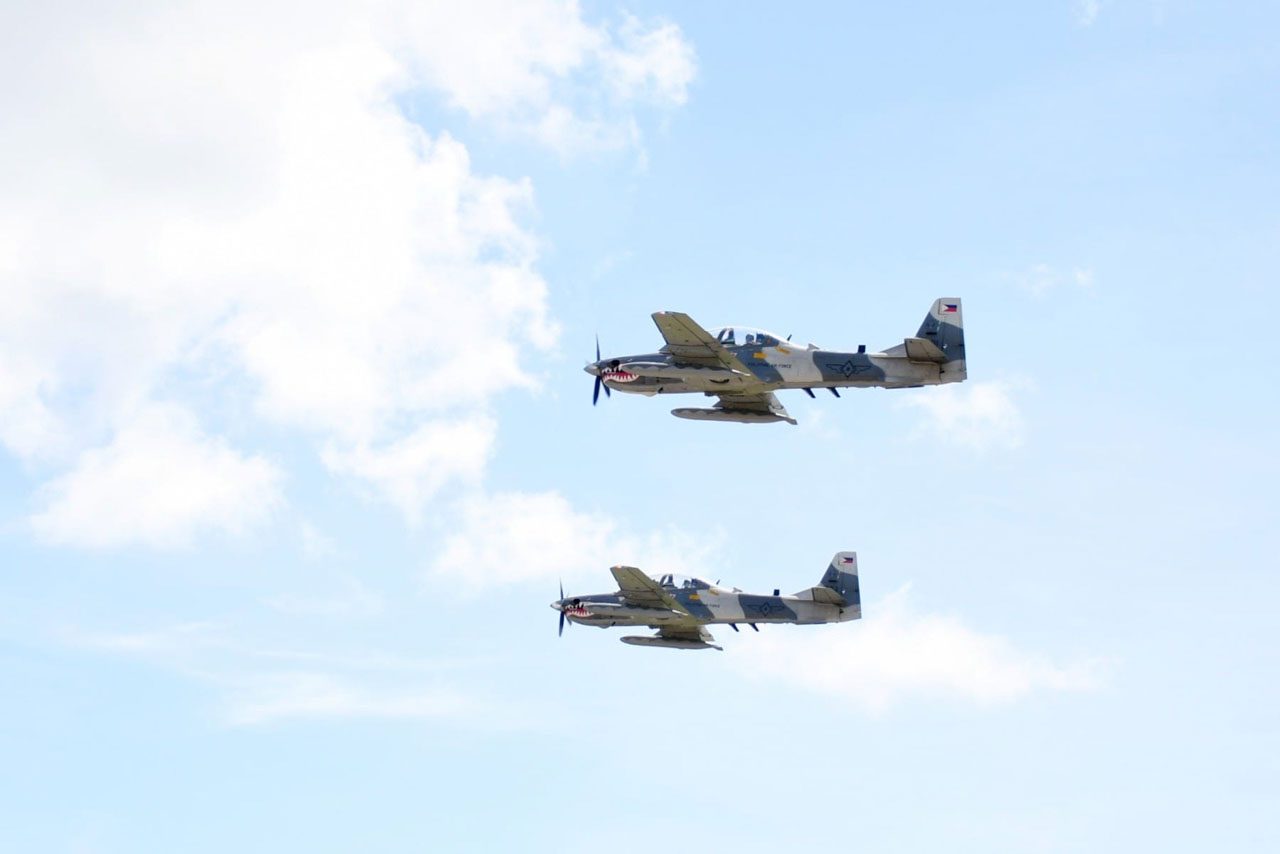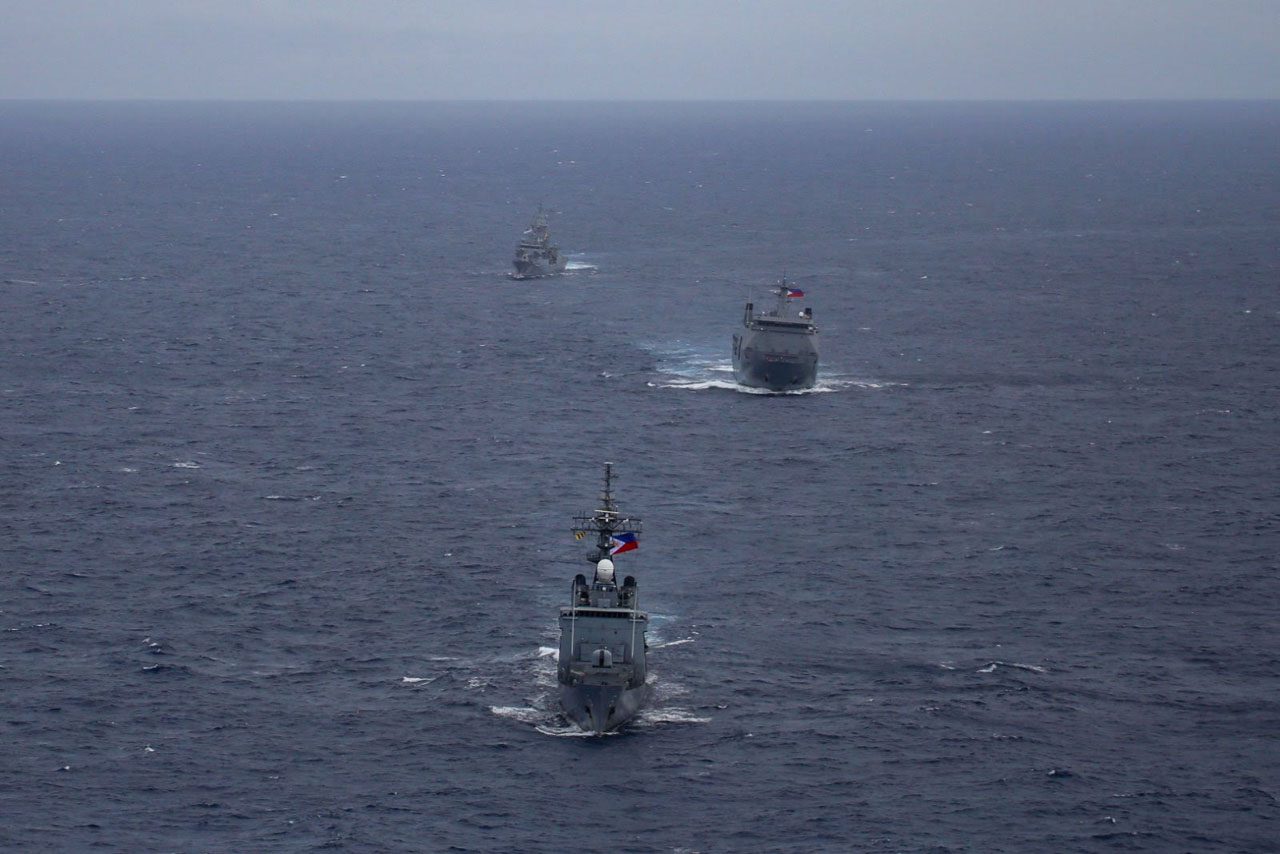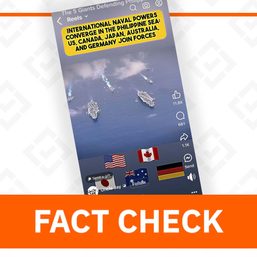SUMMARY
This is AI generated summarization, which may have errors. For context, always refer to the full article.

MANILA, Philippines – Chinese fighter jets “orbited” above the flight path of the Philippines’ Super Tucanos during the latter’s joint air patrol with Australia over the West Philippine Sea last weekend, the Armed Forces of the Philippine (AFP) confirmed on Monday, November 27.
“The circling happened for about 15 minutes and our aircraft were able to finish their mission. They finished the maritime air patrol in the area of the West Philippine Sea without any untoward incident,” AFP chief General Romeo Brawner Jr. said in a chance interview with reporters in Camp Aguinaldo.
The Philippines’ Super Tucanos were over Hubo Reef when the incident happened.
A day before the November 26 incident, Brawner said Chinese vessels shadowed Philippine and Australian ships during joint maritime patrols in the West Philippine Sea, or part of the South China Sea where the Philippines has sovereign rights.
The Philippines and Australia held joint sea and air patrols from November 25 to 27 in the West Philippine Sea. The joint patrols happened just after the United States and the Philippines held joint patrols off the coast of Batanes and in parts of the West Philippine Sea.

The AFP chief said this seems to be a “tactic” of China in the South China Sea, as he pointed out that Chinese vessels had earlier circled US and Japanese aircraft flying over the area on separate occasions.
“We don’t know [what message China is] trying to send us, but for us it is very clear that what we are doing are legitimate operations because we have all the right to patrol our territorial seas and our exclusive economic zone and that is exactly what we are doing – but this time, we are doing it with our allies and our partners,” Brawner said.
China’s Global Times earlier said their military was on “high alert” over “foreign provocations [that] include the Philippines’ enlisting of countries outside of the region to jointly patrol the South China Sea in the midst of its trouble-stirrings on Chinese islands and reefs, an Australian frigate’s provocations in the East China Sea to the Taiwan Straits then to the South China Sea, and a US destroyer’s trespass into Chinese territorial waters in the South China Sea.”
More West Philippine Sea patrols
Brawner said the two back-to-back joint patrols will not be the last as there are talks to continue joint patrols with the US and Australia. Other countries also want to hold joint patrols with the Philippines.
“We are constantly talking to our allies and partners and they are also very much willing to conduct and to continue continue conducting this joint maritime and air patrols with us in the West Philippine Sea,” he said.
Beijing insists on its claim over practically all of the South China Sea even after the 2016 Arbitral Tribunal said their claim and actions in those waters are unlawful. China occupies several features in the West Philippine Sea, and has since built artificial islands that serve as military outposts.
The Philippines has been playing catch up in asserting its rights in the West Philippine Sea, after the Duterte administration failed to assert the ruling in pursuit of friendly ties with China. Marcos has promised that he would not “preside over any process that will abandon even one square inch of territory of the Republic of the Philippines to any foreign power.”

Out at sea, it’s meant that the Philippines – through the AFP and the Philippine Coast Guard, among other government bodies – has become more assertive in the resource-rich waterways.
Tensions have risen particularly in Ayungin Shoal and Panatag Shoal that are within the Philippines’ exclusive economic zone. The EEZ, is a 200-nautical mile area from a nation’s shores where a state has exclusive rights resources, including marine life and potential energy reserves. The right to marine research should also be exclusive to the Philippines within its EEZ.
But China had, several times, barred or tried to bar the Philippines from these features. Resupply missions to Ayungin Shoal, where the rusting BRP Sierra Madre serves as a military outpost, are often fraught with risks. China had used lasers and water cannons against Philippine ships en route to Ayungin Shoal, and its blocking of Philippine vessels even caused a collision.
Panatag Shoal, the traditional fishing ground of Filipino, Chinese, and Vietnamese fisherfolk, should be safe haven for all artisanal fishing. Yet China had also barred Filipinos from entering the lagoon of the shoal. – Rappler.com
Add a comment
How does this make you feel?















There are no comments yet. Add your comment to start the conversation.